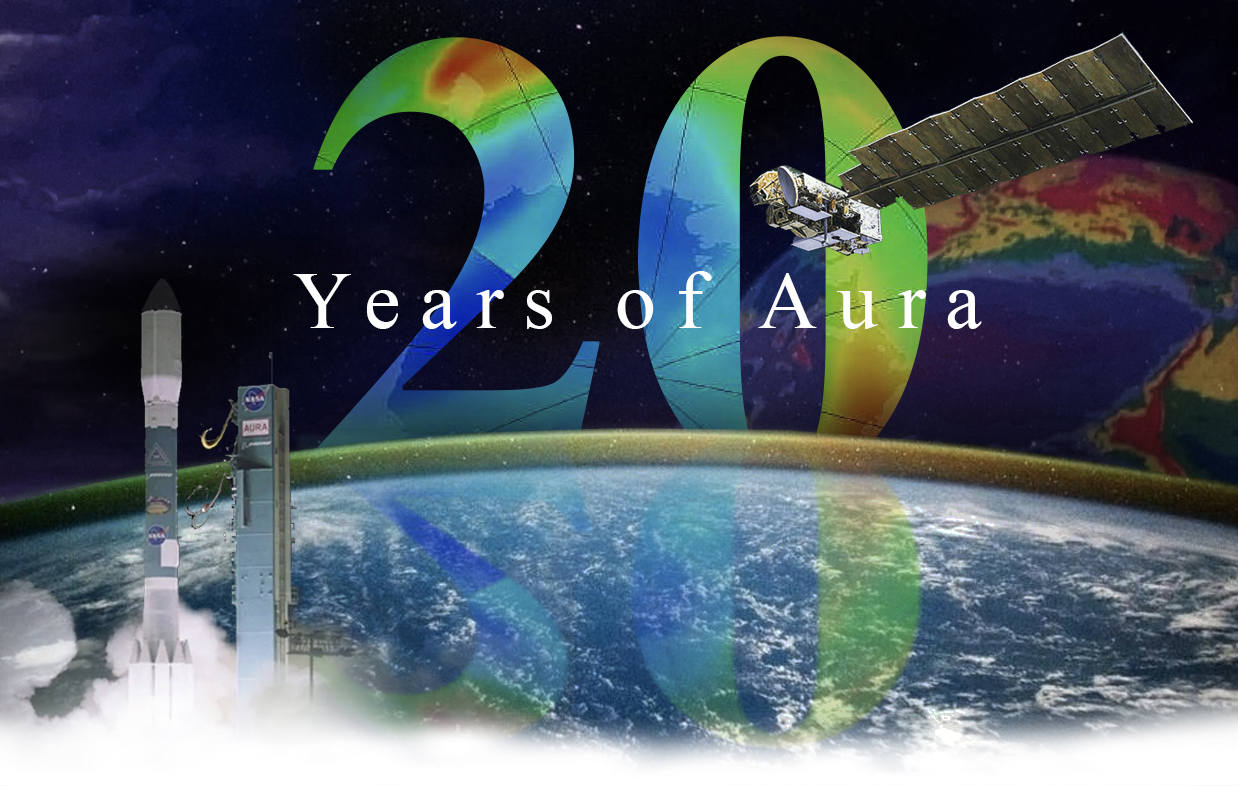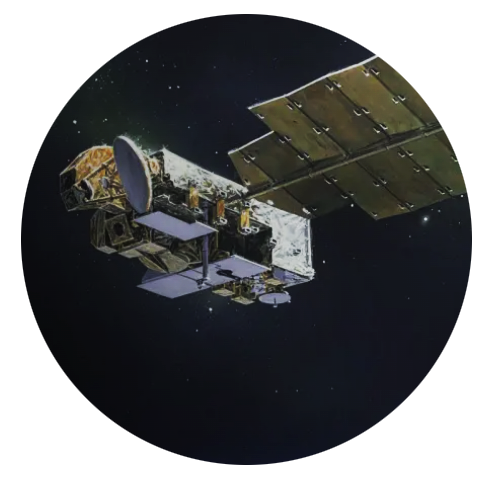
In the 1990s and early 2000s, an international team of engineers and scientists designed an integrated observatory for atmospheric composition – a bold endeavor to provide unprecedented detail essential to understanding how Earth's ozone layer and air quality respond to changes in atmospheric composition caused by both human activities and natural phenomena, a key NASA Earth science objective. The spacecraft (named “Aura” – Latin for “breeze” and “air”) and its four instruments were launched on July 15, 2004.
The Aura mission has been nothing short of transformative for scientific research and applied sciences. The long, stable datasets have furthered process-based understanding of the chemistry and dynamics of atmospheric trace gases, especially those critical for understanding the causes of trends and variations in Earth's protective ozone layer. The Aura observational record spans the period that includes the decline of ozone-destroying substances; Aura data indicate the beginnings of the recovery of the Antarctic ozone hole, a result of unparalleled international cooperation to reduce these substances.
The two decades that Aura has flown have been marked by profound atmospheric changes and often serendipitous events, both natural and man-made. The Aura data have given scientists and applied scientists a detailed view, including at the sub-urban scale, of air pollution around the world, clearly showing the influence on the air we breathe of rapid industrialization, environmental regulations, seasonal agricultural burning, catastrophic wildfires, and even a global pandemic. The Aura data have also been instrumental in the understanding of the impact of the January 2022 eruption of the Hunga undersea volcano on the chemistry and dynamics of the stratosphere. The eruption lofted about 150 Tg of water vapor into the stratosphere, with initial injections reaching into the mesosphere. The water vapor enhancement has not substantially declined in the 2.5 years since the eruption, and studies indicate that it will likely endure for several more years.
Aura's datasets have given a generation of scientists the most comprehensive global view to date of critical gases in Earth's atmosphere and the chemical and dynamic processes that shape their concentrations. Many, but not all, of these datasets are being/will be continued by successor instruments that have benefited from the novel technologies in Aura's instruments as well as the innovative retrieval algorithms pioneered by Aura's retrieval teams.
I wish to acknowledge the decades of hard work of the many hundreds of people who have made the international Aura mission the absolute success that it is. There are too many to acknowledge here and I'm sure that many names from the early days are lost in the mists of time. However, I would like to offer special thanks to those scientists who, back in the 1980s, first dreamed of the mission that would become Aura.
Sincerely,
Bryan Duncan
NASA Aura Project Scientist
All are invited to join us for an informal, hybrid event on September 18th to celebrate the 20th anniversary of Aura's launch, which is on July 15th, 2004. We will have coffee/tea and cake along with an open mic!
Date/Time: September 18, 2024; 12:30-2:30 pm EDT.
In-Person: Barney and Bea Recreational Center (9998 Good Luck Rd., Greenbelt, MD 20771). The Recreational Center will be open to all attendees via the entrance on Good Luck Rd. Non-NASA attendees will have no access to the NASA campus. NASA employees will need their badges to re-enter the NASA campus from the Recreational Center.
If you plan to attend, please RSVP to Bryan Duncan (bryan.n.duncan@nasa.gov), providing the following information:
Will you attend in person or virtually? If in person, how many people will accompany you?
Would you like to speak (< 3 min; either in person or virtually) during the open mic portion of the event?

JUL 16, 2024 - From monitoring the hole in the ozone above the Antarctic to studying air quality around the entire planet, NASA’s Aura satellite has provided scientists with essential measurements during its two decades in orbit.